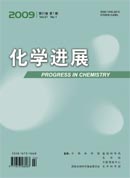Shuai Zhigang. Progresses in Theoretical Chemistry and the Application to Sustainable Development[J]. Progress in Chemistry, 2009, 21(11): 2259-2270.
We first give a brief summary on the progress of theoretical chemistry in China, including advances in relativistic quantum chemistry, multi-references electronic structure theory, gas-phase molecular reaction quantum dynamics, excited state structure and its dynamic processes, computational photo-chemistry, linear scaling electronic structure theory, ab initio valence bond theory, new and more accurate density functionals for various interactions, surface catalytic reaction theory, and in theoretical studies for functional materials, etc. We then present an example of application of theoretical chemistry to the prediction of power conversion efficiency of the solar cells, an issue closely related to the sustainable developments.
Contents
1 Introduction
2 Progress in theoretical chemistry
3 Theoretical chemistry interdisciplinary in application
4 Conclusion








